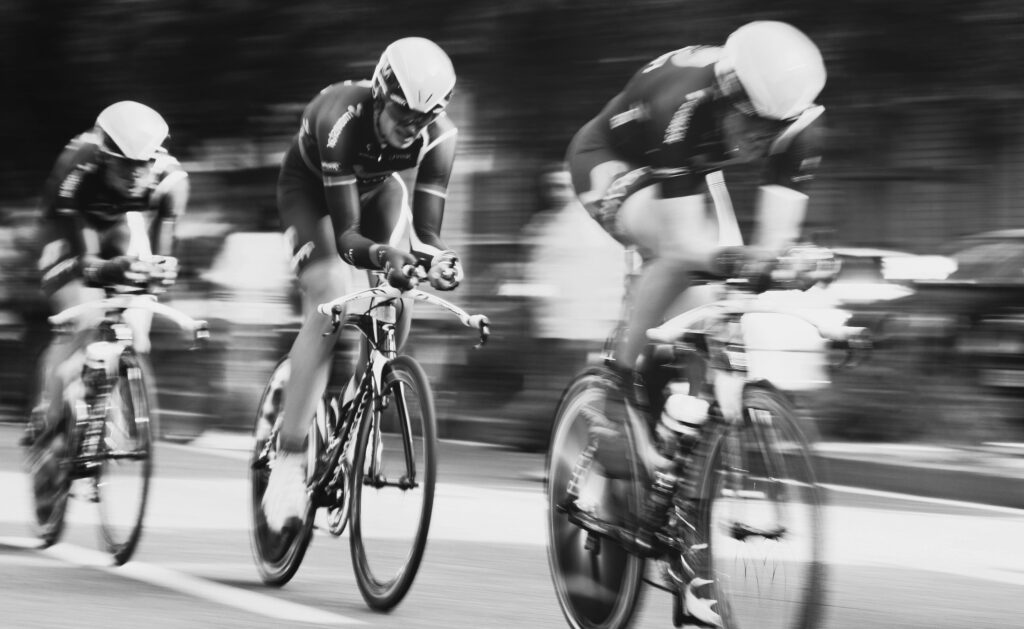Ultimate Guide To Race Day Planning

Most endurance athletes understand the importance of both physical and mental preparation going into race day. Those of us who have raced often enough likely agree that poor races often stem from lack of readiness and high pressure, while successful races result from feeling both mentally and physically primed. From my race day planning guide, here are key pieces to the race prep puzzle. I use these tips with my athletes before their events to help ensure success on race day.
Goal Setting
We’ve all likely heard of SMART goals. Those are a little too convoluted for my style, so I like to focus on three types of goals: outcome goals, performance goals, and process goals.
Outcome goals are the big picture objectives, such as finishing a race or qualifying for an event. For example, you might aim to qualify for Leadville MTB or Boston, or take home the state championship for the state road race. Performance goals are the milestones you want to reach during the race, like going for a negative split or maintaining a pace of ten minutes per mile. Process goals emphasize the techniques and strategies you’ll use to reach your performance goals. They focus on execution, such as drinking water at every aid station. You can also make the process goals fun (as opposed to fitness) by setting a goal to say hello to everyone who passes you, thank all of the volunteers, or find all of your teammates to exchange a fist bump on race day.
As good as goals are, it’s also important not to forget about contingency plans. As much as we would like everything to go perfectly on race day, it’s important to be prepared for the unexpected. Perhaps your hydration plan isn’t working, or you face an unanticipated weather change. Having a plan B can make all the difference in maintaining your composure and performance. I encourage all of my athletes to identify 3 potential things that could go wrong or test their abilities on race day. Then, create a game plan for what to do if any of those things happen. For example, “If I can’t hold the pace I’m planning on, I’ll have a gel and ease up by 15 seconds/mile, then reassess in another few miles.”
Visualization
Who here has heard of Steve Nedoroscik (aka: pommel horse guy)? Fun fact: he uses visualization to prepare for his pommel horse routines by imagining each movement in detail. Adopting a similar approach can help you prepare to take on the big moments during your race.
To practice visualization effectively, find a quiet space where you can imagine the sights, sounds, smells, and feelings associated with your race. Make it as vivid and detailed as possible! Importantly, focus on realistic expectations rather than idealized scenarios where you feel like a superhero. Visualize yourself handling manageable challenges and making effective decisions. This approach builds confidence and readiness without setting you up for disappointment.
ADVERTISEMENT

Pre-Performance Routines
A consistent pre-performance routine can reduce anxiety, enhance focus, and boost confidence. PPRs are individualized and can include physical, mental, and emotional components. An effective PPR involves physical preparation (e.g., warmup, dynamic stretching) AND mental preparation (e.g., visualization or meditation). Create a routine that works for you, and then stick to it! They’ll make your race day feel familiar and manageable, even under pressure.
Managing Race Day Jitters
Anxiety can be a real gremlin on race day. When I competed in triathlons, I developed a habit of disappearing from the transition area after getting my bike and everything set up. I’d look at my spouse and say, “I’m going to go get my jitters out,” and then find a quiet area to ground myself. Remember, anxiety is natural and can be managed. One technique I often recommend is box breathing, also known as square breathing. This method involves inhaling for four counts, holding for four counts, exhaling for four counts, and holding again for four counts. This technique can be great in the starting corral when the nerves tend to come out to play.
Conclusion
If there’s one thing I am certain of, it’s that these sport psych skills can be a game-changer in endurance sports. But remember, nothing new on race day! The strategies from this race day planning guide probably won’t work if you pull them out for the first time on race day. Practice them when you don’t need them. Use the goal setting and visualization for low-stakes races or workouts. However, if you practice regularly in training, they’ll become second nature when racing!
Note. Want to nerd out over this material and REALLY roll up your sleeves? Check out Skadi Sport Psychology’s Ultimate Guide to Race Day Planning for a deeper dive into these strategies and more. These tools will legitimately make your next race one of your best ones yet 💥
ADVERTISEMENT

With over a decade of research and clinical experience, Dr. Ayala (she/her) is a Licensed Psychologist and Certified Mental Performance Consultant based in Minneapolis, MN. Dr. Ayala is a published author of over 20 research articles and book chapters, and has been featured in Trailrunner Magazine, the New York Times, and other media outlets. Beyond her professional achievements, she is an accomplished cyclist, having landed on National podiums in road racing, fat bike racing, virtual racing, and gravel racing over the past several years.





